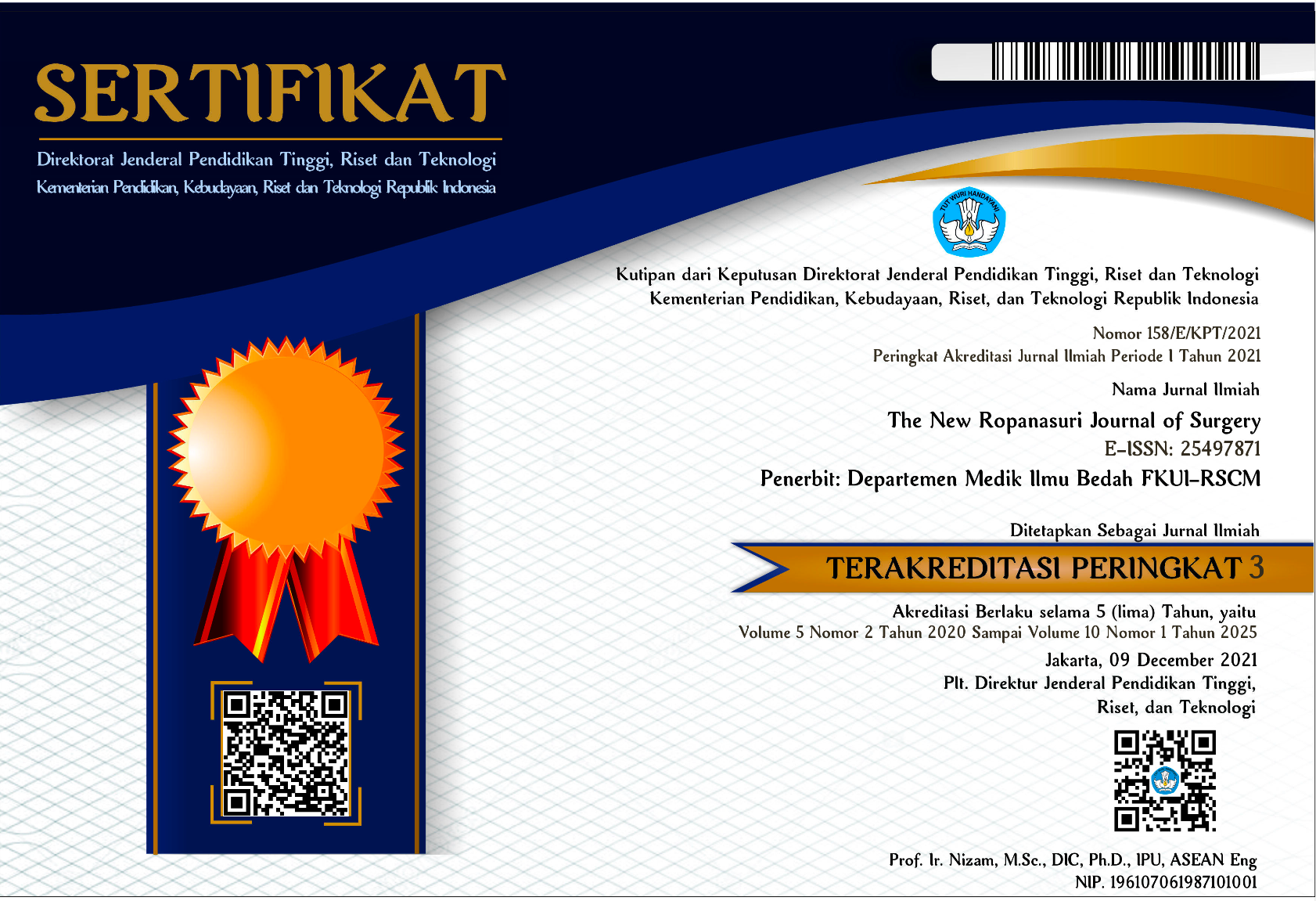Abstract
Introduction. Lymph node metastasis of colorectal cancer is an independent prognostic factor and used as a guideline for adjuvant therapy. Paralleled to this, TNM staging system has been used widely and nowadays referred to a gold standard of colorectal cancer staging. So far, such a system classifies the staging based on the numbers of positive lymph node involvement. Japanese classification was another kind of system do that categorize based on the distribution of lymph nodes involved (i.e. paracolic/rectal, intermediate, root of mesenteric artery). Method. This was a preliminary study analyzed of 15 subjects with sigmoid and rectal cancer underwent surgery at dr. Cipto Mangunkusumo and Fatmawati General Hospital between September and October 2015. We studied the specimen for histopathological evaluation focused on the numbers of positive lymph nodes and the distribution of lymph node metastasis. Staging was carried out using both of TNM system and Japanese classification, and these variables were subjected to agreement analysis. Results. We found more than twelve lymph nodes from each sample. Based on TNM staging system, there are seven subjects on stage II, three subjects with stage IIIb and five subjects with stage IIIc, meanwhile based on Japanese Classification, there were seven subjects with stage II, one subjects with stage IIIa and seven subjects with stage IIIb. Analysis of agreement between both of classifications resulted in coefficient Kappa of 49.3% (moderate category) with p-value of 0.04. Conclusion. Our preliminary study showed that agreement between both of classifications to specify sigmoid and rectal staging is in moderate category. Japanese classification is feasible to be used. Agreement accuracy may be obtained with a bigger sample.
Recommended Citation
Putranto, Agi S.; Kristianto, Yusak; and Wangge, Grace
(2016)
"Comparison of Japanese Classification with the TNM System in the Assessment of Staging in
Sigmoid and Rectal Cancer Patients at dr. Cipto Mangunkusumo and Fatmawati General
Hospital: A Preliminary Study,"
The New Ropanasuri Journal of Surgery: Vol. 1:
No.
1, Article 6.
DOI: 10.7454/nrjs.v1i1.6
Available at:
https://scholarhub.ui.ac.id/nrjs/vol1/iss1/6













